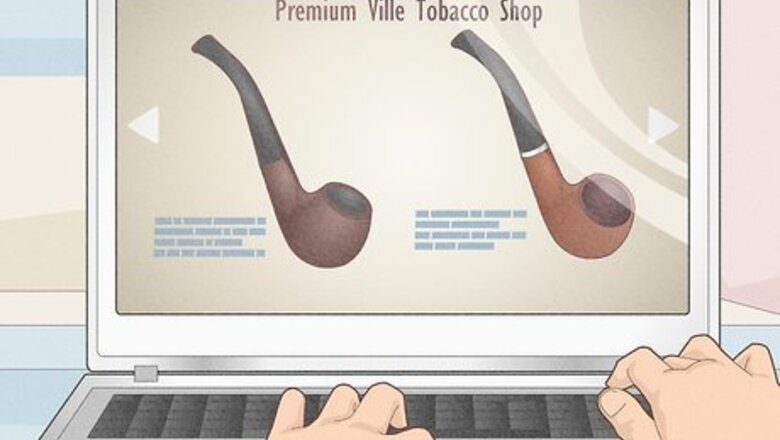
views
Gathering Supplies
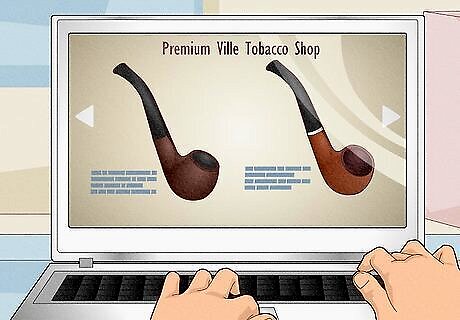
Browse pipes. Part of the pleasure of smoking pipes is the ability to create your own perfect experience. Take your time browsing a tobacconist's shop for aesthetically pleasing options. Heft each pipe in your hand — a lightweight pipe is almost always more comfortable. If you're at a complete loss, ask the employees for recommendations. Even an attractive wooden pipe can have hidden flaws — and probably does if it comes with a low price tag. If price is your main concern, a corncob pipe is a safer bet. A metal filter in the stem can absorb moisture and perhaps alter the flavor. This is a matter of personal preference, and the filter should be removable if you change your mind.
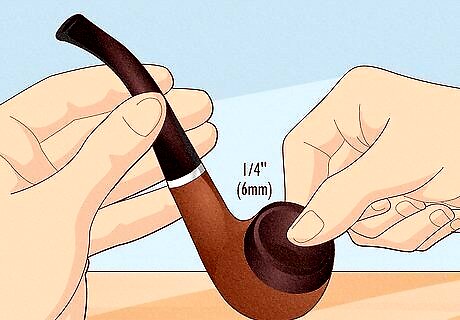
Check for mechanical flaws. Nothing disrupts a smoke like a malfunctioning pipe. Avoid frustration with a quick inspection before you buy: Avoid pipes with walls thinner than ¼ inch (6mm), about the width of a pencil. The base should be at least this thick as well; to measure this, put a straight pipe cleaner down the chamber, pinch it at the top of the chamber, then compare this height to the outside wall. Stick a pipe cleaner down the stem. It should run smoothly through and emerge very close to the base of the chamber. Although there are exceptions, thick varnishes may flake and bubble from heat after heavy use.

Gather accessories. You'll need more than a pipe to start smoking. If you visit a pipe shop, get everything at once to avoid multiple trips and hassle. You'll also need: A lighter or matches. Plastic butane lighters are cheap and plentiful but some smokers dislike the smell and taste. Pipe lighters are available for a variety of prices, but it might be a good idea to start with a good supply of wooden matches. You can always invest in a pipe lighter later. A bundle of pipe cleaners to keep your pipe clean and functioning properly. Pipe tamper. This is used to pack the tobacco in the bowl.
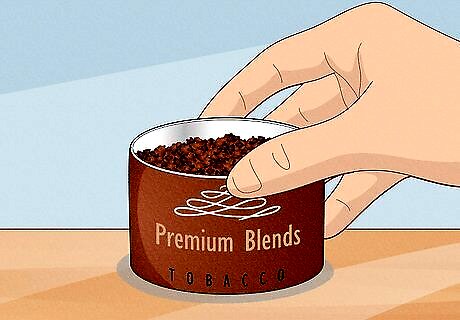
Choose a pipe tobacco. Walking into a tobacco store can be overwhelming at first. Cyprian Latakia? Dutch Cavendish? Fortunately, a quick lesson should be enough for your first purchase. Aromatic blends (sometimes called American) have added flavors. Most beginners prefer these milder, sweeter options. Non-aromatic blends are pure tobacco, typically with a strong, spicy taste. "English blends" are non-aromatic blends that include Latakia, a powerful, smoky variety. Any tobacco can go through a "Cavendish" process to make it sweeter and lighter. If possible, purchase two or three small sample tins so you can try a range of options.
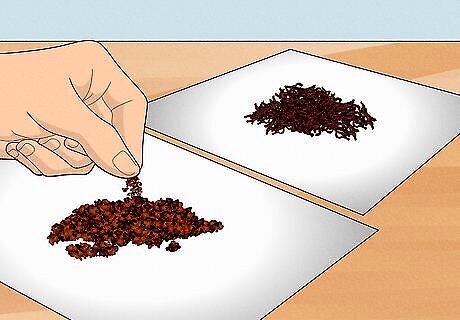
Choose a cut of tobacco. Tobacco is sold in various shapes and sizes. There are many cuts and many ways to prepare them, but these are good beginner options: Ribbon cut tobacco comes in long, thin, ribbons, which can be placed directly in the bowl. Flake cut tobacco comes in thick strips, or irregular broken pieces. Either way, rub it between your fingers until it breaks apart into small pieces.
Smoking

Set aside 20–40 minutes. Pipe smoking is a leisurely activity. Take some time to yourself in a comfortable spot where you won't be disturbed, and where your smoke won't disturb anyone else. If you're smoking a new briar pipe, smoke indoors away from drafts. Even gentle wind will cause the pipe to burn hotter, which can damage a briar pipe before it's "broken in." This is not necessary for most other pipes, including corncob pipes.
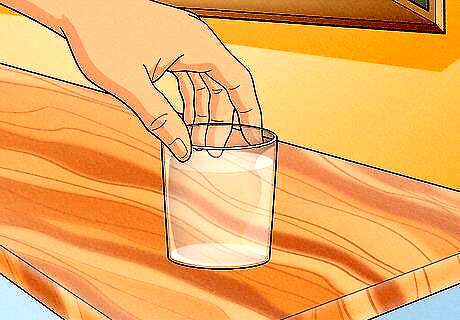
Bring along a glass of water. A drink on hand keeps your mouth and throat from drying out, and may prevent a sore tongue. Some people enjoy pairing pipes with coffee or tea instead, but wait on that until you are more experienced, and can choose a good pairing. Drinking alcohol before or during a smoke is not recommended, since it greatly increases smoke-related cancer risk.
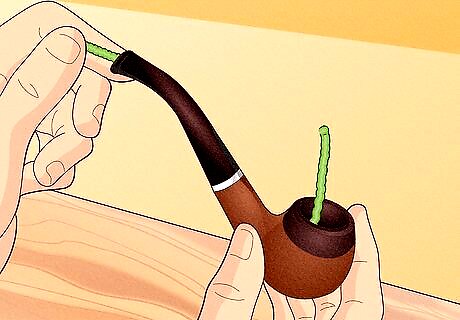
Clean the pipe. Before each smoke, run a pipe cleaner through the stem and tap out the remnants of ash and tobacco.

Fill the pipe in three pinches. Correct packing takes practice, and has a major impact on your enjoyment. The tobacco should be loose enough that you can easily draw air through it, and springy to the touch. Have an experienced smoker show you what to do, or use this beginner-friendly method: Drop a tiny pinch of tobacco in the chamber. Tamp this very lightly or not at all, leaving plenty of air between the leaves. Add a slightly larger pinch, tamping lightly until the bowl is half-filled. Finish with a third pinch, tamping with a bit more pressure until there is a gap of ¼ inch (0.6mm) above the tobacco. Note — when breaking in a new briar pipe, many people fill to ⅓ or ½ the depth described here the first few smokes. This helps form a protective cake of charcoal, although not all smokers agree with this approach.

Light the pipe with a wooden match or a pipe lighter. If using a match, let the sulfur burn off for a few seconds first to avoid getting a mouthful of match taste. Move the flame around the surface of the tobacco while drawing on the mouthpiece with long, even draws. Many pipe smokers prefer to light the pipe once, then tamp down the ash, extinguishing the embers in order to give the tobacco a flat, even surface. This is called a "false light" - it's an optional step, but tends to help the tobacco burn more evenly and require fewer relights later. After tamping, relight the pipe as described above. If the pipe goes out right away — which is common — just tamp it down gently and light the same way.
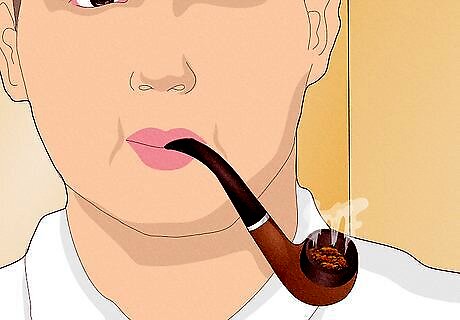
Smoke with small, occasional draws. Most pipe smokers draw smoke into their mouth by sucking gently, or moving their tongue back along the palate. Some beginners and cigarette smokers inhale instead, but it's best to keep the smoke in your mouth, not your lungs. Hold the pipe bowl in your hand as you smoke for the first time. Draw just often enough to keep the pipe lit, without making the pipe too hot to hold. A minority of pipe smokers do enjoy the occasional inhale, which gives more of a nicotine buzz. Pipe smoke is much stronger and thicker than a cigarette, so stick with a gentle pull and limit yourself to one or two inhales per bowl. Avoiding inhalation does make lung cancer less likely, but there is still a high risk of oral cancers from long-term use.
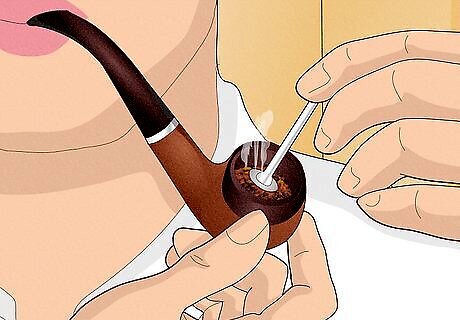
Tamp and relight as necessary. If the pipe goes out, just tamp again and relight. The ash surface is actually beneficial, and there's no need to dump it out until it's thick enough to prevent lighting. When this happens, tap out about half of the ash by knocking the pipe against a cork knocker, your hand, or another soft object.
After the Smoke
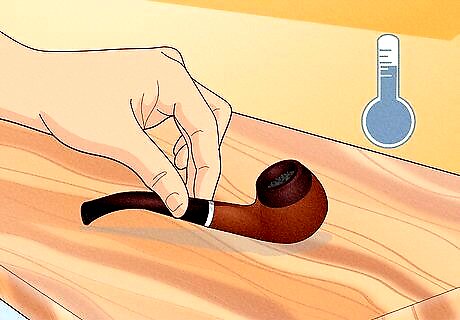
Let the pipe cool. Once you're done smoking, let the pipe cool. If you didn't finish the bowl, tamp down the tobacco to extinguish it. Never take apart the pipe while it is still warm. This may crack the stem.
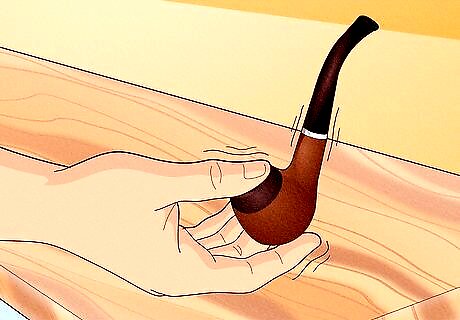
Maintain the bowl. There are two different approaches for this, based on the type of pipe: Briar pipes need a charcoal buildup (a "cake") to protect the wood. Cover the bowl and shake the ash around to loosen it and distribute it around the bowl of the pipe. With your finger, rub the ash into the walls of the bowl. Dump the remnants out. For other pipes, most smokers prefer them kept clean. Shake out the ash, then wipe the bowl with a paper towel or pipe cleaner. (Meerschaum pipes especially should never be allowed to cake heavily.)
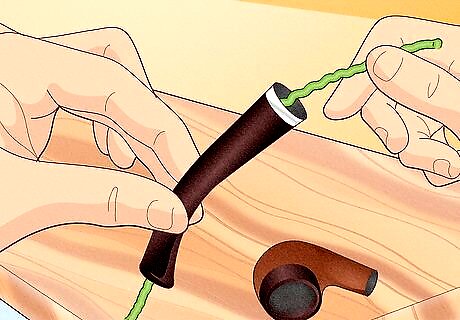
Clean the stem and shank. Take off the stem and stick a pipe cleaner through it to remove moisture and residue. Do the same with the shank of the pipe, leading down to the chamber.
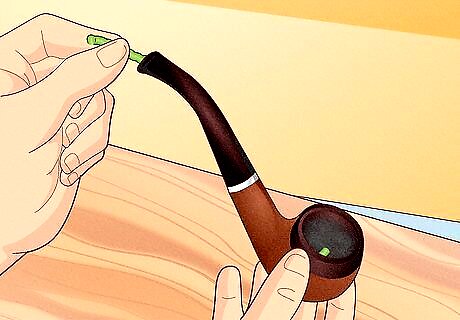
Run a pipe cleaner through the shank and stem. Take off the stem of the pipe. Moisten a pipe cleaner slightly (saliva works fine) and push through the shank until you can just see the end at the bottom of the bowl. Repeat this process a few times, alternating by gently blowing through the stem to clear any loosened ash. Repeat for the stem.
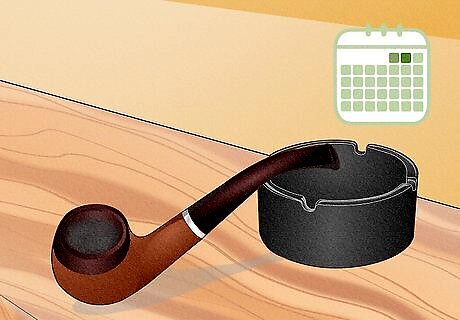
Leave the pipe alone for a day or two. This gives time for the moisture in the pipe to evaporate, preventing difficult draws and gurgling noises. If you want to smoke more often, add a second pipe to your collection. You can leave a pipe cleaner in the pipe to absorb any remaining moisture as it rests.
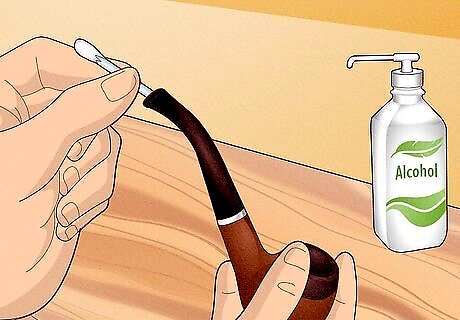
Swab with alcohol after a few smokes. A pipe cleaner or cotton swab dipped in alcohol will remove gunk that can block airflow or affect flavor. If using a kind of alcohol that's poisonous to drink, such as rubbing alcohol, be sure to let the pipe rest for 24 hours to allow the alcohol to fully evaporate. Any high-percentage spirit can be used, but neutral tasting spirits such as grain alcohol or vodka are best. Follow it with a dry pipe cleaner to remove the moisture. Be careful not to get any alcohol on the finished surfaces of the pipe as it can remove the finish. Some pipe cleaners do this after each smoke, and others don't bother with it at all. If you stick with the habit, ask a fellow smoker for help identifying the signs of a dirty pipe.


















Comments
0 comment